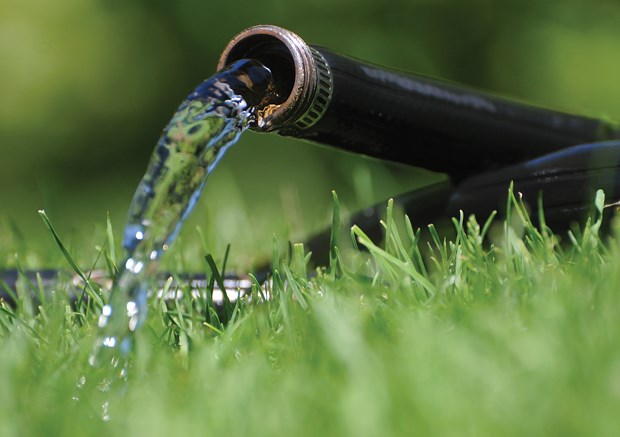What happened to all the water?
A familiar question these days as the Greater Vancouver Water District raised water restrictions to Stage 3 on July 20.
Suffice to say, the lawn cannot be watered and will go brown. The car is not allowed to be washed at home and watering permits for nematode sprays are not going to be issued this summer.
Despite those restrictions, under Stage 3, "hand watering of trees, shrubs, flowers, decorative planters and vegetable gardens using a spring-loaded shutoff nozzle, containers or a drip irrigation system is permitted," according to Metro Vancouver. That's good news for plant lovers, not so good for lawn lovers. A full list of Stage 3 watering restrictions can be found at metrovancouver.org.
Residential water use is often the first target for restriction because people are wasteful with water at home. We all take nice long showers, wash the car maybe more than it needs to be, and rinse the driveway when it could be swept instead. And who doesn't love a well-watered lush lawn? Businesses, by comparison, use more water than residential clients, but businesses contribute to the economy so restrictions are lighter for commerce.
Agriculture is one of the largest sectoral users of water, using more water than mining operations. But everyone needs food to eat so farmers use water with little restriction. However, the largest allocation of water in B.C. goes to "waterpower" at more than 592,000,000 cubic decametres, according to the B.C. Ministry of Environment, which sets the total amount of surface water authorized to be used annually in British Columbia. A decametre is a volume measuring 10 metres by 10 m by 10 m, equalling 1,000 cubic metres of water in this case.
Water keeps our gardens, parks, sport fields, street trees, businesses and farms hydrated during summer. We would notice a big difference without regional controls for water use during B.C.'s summer drought. Even though the South Coast gets plenty of rain in the winter, our existing reservoir lakes have a finite capacity. We have to make the winter rainfall we store in lakes, last throughout summer's drought. This year's drought came early and evaporated any stored water we had saved for September.
Everyone in B.C. pays for water use under Bill 18, the new Water Sustainability Act that was passed by the Liberal government on May 29, 2014. Not everyone is happy with the new water rates, especially for corporations that are perceived to be getting water at bargain basement prices. For example, companies buying water to bottle pay $2.25 per 1,000 cubic metres. A cubic metre of water equals 1,000 litres.
By comparison watering of golf courses, residential gardens, parks or similar is sold by the government at 85 cents per 1,000 cubic metres, according to engage.gov.bc.ca/watersustainabilityact. Therefore residential water users are paying less for water than companies pay.
For another comparison, our American neighbours in the city of Lacey, Wash., have a tiered system for water and charge one cent for three gallons (11 litres), if residents use between 601 and 1,200 cubic feet per month with fees increasing as consumption rises. A cubic foot equals just over 28 litres.
Paying for water by the "meter reading" is not yet law in B.C. However, if current weather trends hold, water metering may soon be the reality for residential and commercial users.
During the past decade that I have been writing this column, I have continually tried to impart some basic water-saving techniques for gardeners. Firstly, whenever you plant anew or transplant, always dig deep and enrich the soil at planting time. Deep soil allows for deep rooting, which helps plants withstand drought stress.
Secondly, mulching the soil's surface after planting helps to increase microbial, bacterial and fungal life in the soil, which increases the water and nutrient holding capacity of the soil. Mulching also moderates drying of the soil and lessens stress on shallow growing feeder roots from plants. And finally, learn how to use your watering system, whatever it is, to its maximum efficiency.
Watering for 10 minutes three times a week is a poor substitute for watering once a week for 40 minutes. Water needs time to penetrate down into the soil, so short durations of water don't penetrate deep enough to provide sustaining benefits to plants.
Our society is undervaluing the true cost and scarcity of fresh water in our world. We are careless with water, we think it will last forever and some people use it with impunity, as if it's their right to use water however they choose.
This year's early drought demonstrated that within two short months, our region is capable of guzzling down most of the water we have stored for the long summer ahead. Welcome to the 'brown coast.'
Please pass me some bottled water.
Todd Major is a journeyman horticulturist, garden designer and builder, teacher and organic advocate. [email protected]



